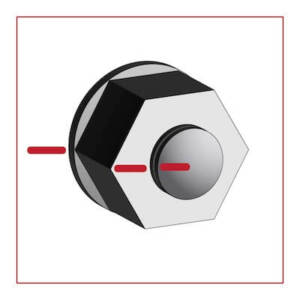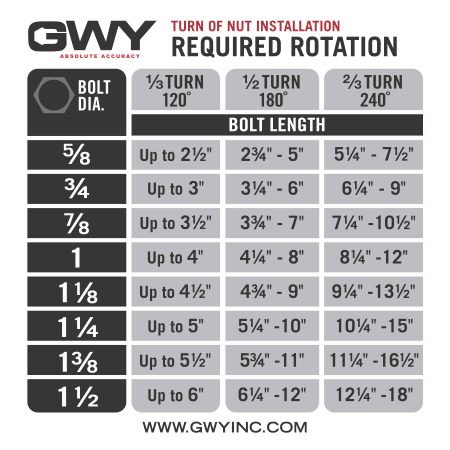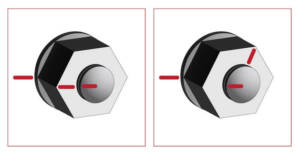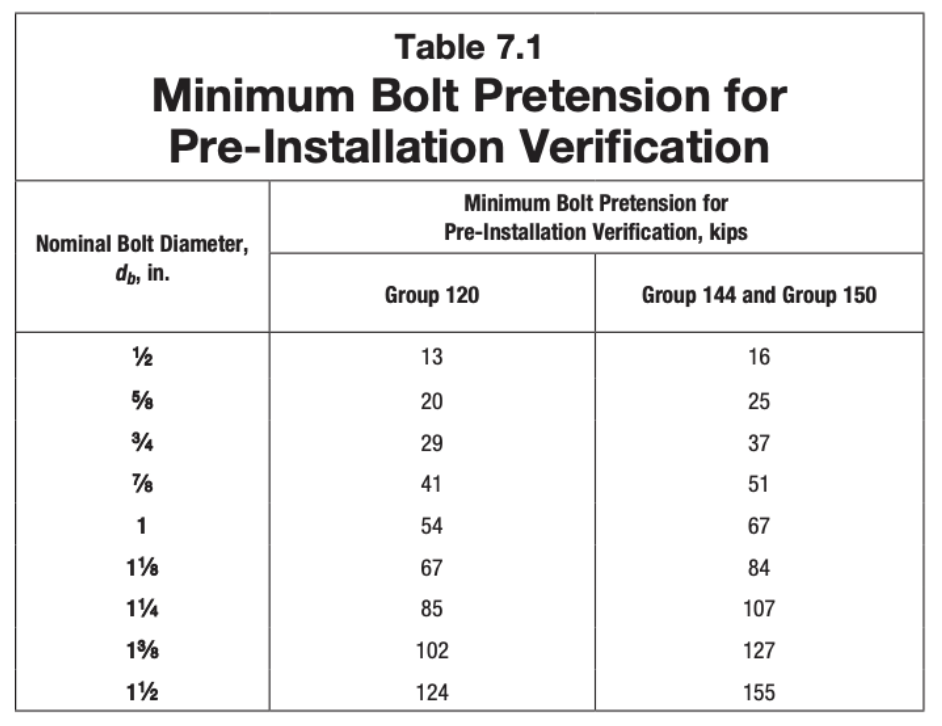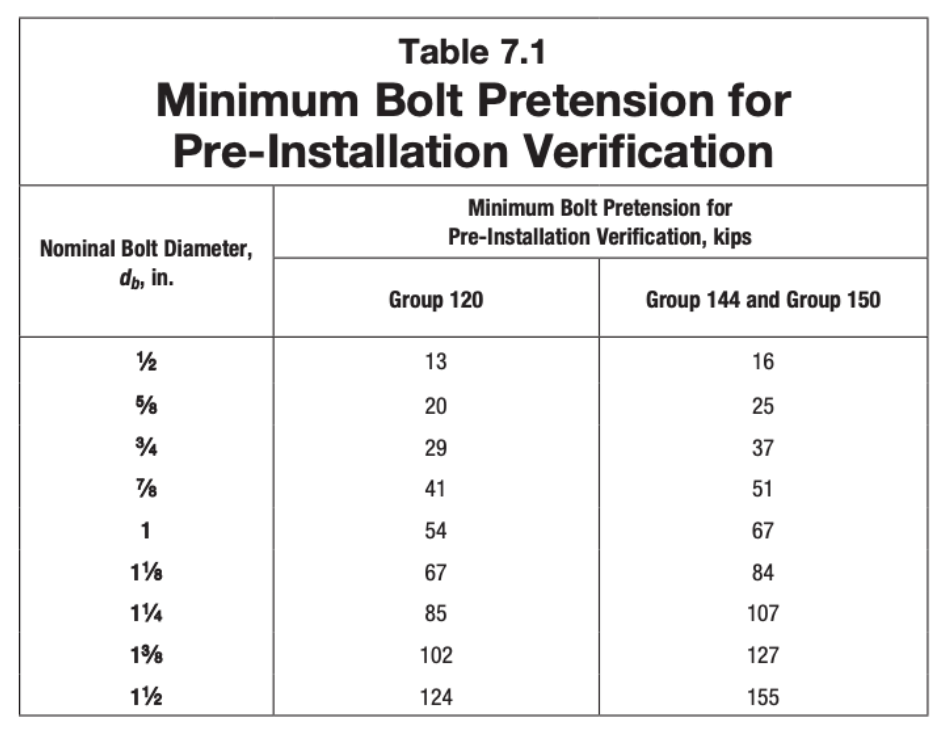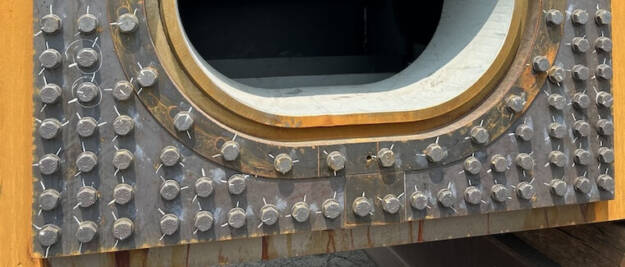
The Turn-of-Nut method is an industry standard for bolt pretensioning verification. But what is it, and how is it done? Read on to find out.
What is the Turn-of-Nut Method?
The Turn-of-Nut method is a rotation-based method of installation used in bridge construction and structural bolting. This common bolt pretensioning technique relies on the application of a designated amount of relative rotation between the bolt and the nut to achieve minimum required tension.
The method can be performed using a torque wrench or, more conveniently, with a Turn-of-Nut wrench to rotate the nut to a specified degree depending on the bolt length and diameter.
Turn-of-Nut is frequently used to pretension bolts in slip-critical and fully tensioned connections, such as those in bridge construction. The controlled tightening results in increased friction between the faces of bolted connections, which:
- Strengthens connections subject to harsh conditions
- Reduces deflections in the structure
- Prevents bolts from loosening under impact loads and vibrations
How to Perform the Turn-of-Nut Method
When performing tension verification methods, ensure that all connections receive the same treatment, both pre- and post-installation (lubrication, testing, etc.).
To perform the Turn-of-Nut method:
- Determine the ratio between the fastener’s length and diameter as well as the slope disposition of the outer steel plies. Refer to the appropriate RCSC table to determine proper rotation.
- Insert the bolt assembly into a bolt tension calibrator. The calibrator should have documentation that states its calibration is up to date.
- Snug tight the connection as required by AISC/RCSC section 8.1.
- Snug tight: Typically achieved with a few impacts of an impact wrench or the full effort of an ironworker on an ordinary spud wrench.
- Using a marker or wax pencil, draw a mark from the center of the bolt head across the nut and onto the steel. This will indicate the starting position of the nut (this is called matchmarking).
- If using a TONE Turn-of-Nut wrench for your final turn, make sure it is set for the proper rotation according to the table below.
- Rotate the nut to the specified amount while restraining the bolt.
-
- With the Turn-of-Nut tool supplied by GWY, the gun does all the work. As the operator, you simply pull and hold the trigger until the tool stops on its own.
-
- In the case of a 1″ diameter nut under 4″ verify the rotation has moved 120° past the starting point following rotation.
- If conducting a pre-installation test, be sure the bolt tension calibrator shows at least the proper minimum tension or higher (never under) for the bolt diameter that you are testing according to the following table (Table 7.1). Make sure the nut has rotated to the intended rotation according to the previous chart (Turn-of-Nut Installation Required Rotation)
Source: Specification for Structural Joints Using High-Strength Bolts, Research Council on Structural Connections (RCSC), June 2020
For the most accurate results, make sure you mark the bolt, nut and steel prior to applying the Turn-of-Nut method.
Pre-Installation Verification Best Practices
Fastener assembly testing, or pre-installation verification (PIV), must be conducted onsite using the same tools that will be used for the job. Testing is necessary to identify possible issues or incompatibility between tools, fasteners and installers before the actual work takes place. PIV does not stand in for final verification — Turn-of-Nut should be the final step in the installation process for each bolt assembly.
Even then, Turn-of-Nut should not be used until all connections have been snug tightened, or drawn into firm contact with the full force of an installer. Snug tightening is necessary before using any Turn-of-Nut tools for final rotation, since these tools won’t start counting rotations unless the bolt assembly has been snug-tightened.
To ensure your bolt tension calibrator is calibrated to deliver the proper tension, send it to a repair or calibration specialist like GWY. We offer calibration services for all bolt tension calibrators (BTC), torque tools and more. Our calibration system has a 36,000-ft.-lb. capacity, which can help ensure absolute accuracy in even the biggest projects. Our BTC calibration system has a capacity of 350,000 pounds of force (350 kilopascals).
How to Inspect Connections Requiring Turn-of-Nut
When inspecting structural connections, the inspector must refer to the matchmarks to verify the original position of all elements. Inspectors are not required to verify that connections are snug tightened (except in a handful of U.S. states).
Refer to the following chart once more (Table 7.1) to see the minimum tensions for each diameter of heavy hex bolts:
Source: Specification for Structural Joints Using High-Strength Bolts, Research Council on Structural Connections (RCSC), June 2020
Important Information About the Turn-of-Nut Method
There are some important caveats and things to be aware of when using Turn-of-Nut:
Short bolts: It can be difficult to use Turn-of-Nut for some smaller (shorter) bolts, but there is a solution. If a bolt is too short to fit into a bolt tension measurement device, you can install the bolting assembly in a steel plate with the proper size hole and apply the required turns. The assembly should then be removed from the steel plate using a wrench to confirm that stripping has not occurred. No verification is required for achieved pretension to meet the requirements in Table 7.1 of the RCSC’s Specification for Structural Joints Using High-Strength Bolts. This test demonstrates that the bolting assembly will not fracture or strip during tightening, and the Turn-of-Nut method assures a strain that will produce the minimum required pretension.
Lubrication: Lubricated or galvanized bolts require less torque and can be easier to snug tighten, which can result in over-tightening before applying Turn-of-Nut. If over-tightened, the bolt could break at final rotation. On the other hand, improper or no lubrication can cause the bolt and nut assembly to seize, resulting in rotation failure at less-than-specified pretension.
With proper training, PIV protocol and guidance from structural bolting experts (like those at GWY), you should be able to identify any of these concerns and use Turn-of-Nut with confidence.
FAQs about Turn of Nut Method
What is the Turn-of-Nut method used for?
Turn-of-Nut is a pretensioning technique used in structural bolting, often in bridge construction. It is the most accurate way of achieving minimum required tension for structural bolts.
How do I use the Turn-of-Nut method on short bolts?
For bolts too short to fit into a bolt tension measurement device, you can use the Turn-of-Nut method for pre-installation verification by installing the bolting assembly in a steel plate with the proper size hole and applying the required turns. The assembly should then be removed from the steel plate using a wrench to confirm that stripping has not occurred. No verification is required for achieved pretension to meet the requirements in Table 7.1 of the RCSC’s Specification for Structural Joints Using High-Strength Bolts. This test demonstrates that the bolting assembly will not fracture or strip during tightening, and the Turn-of-Nut method assures a strain that will produce the minimum required pretension.


